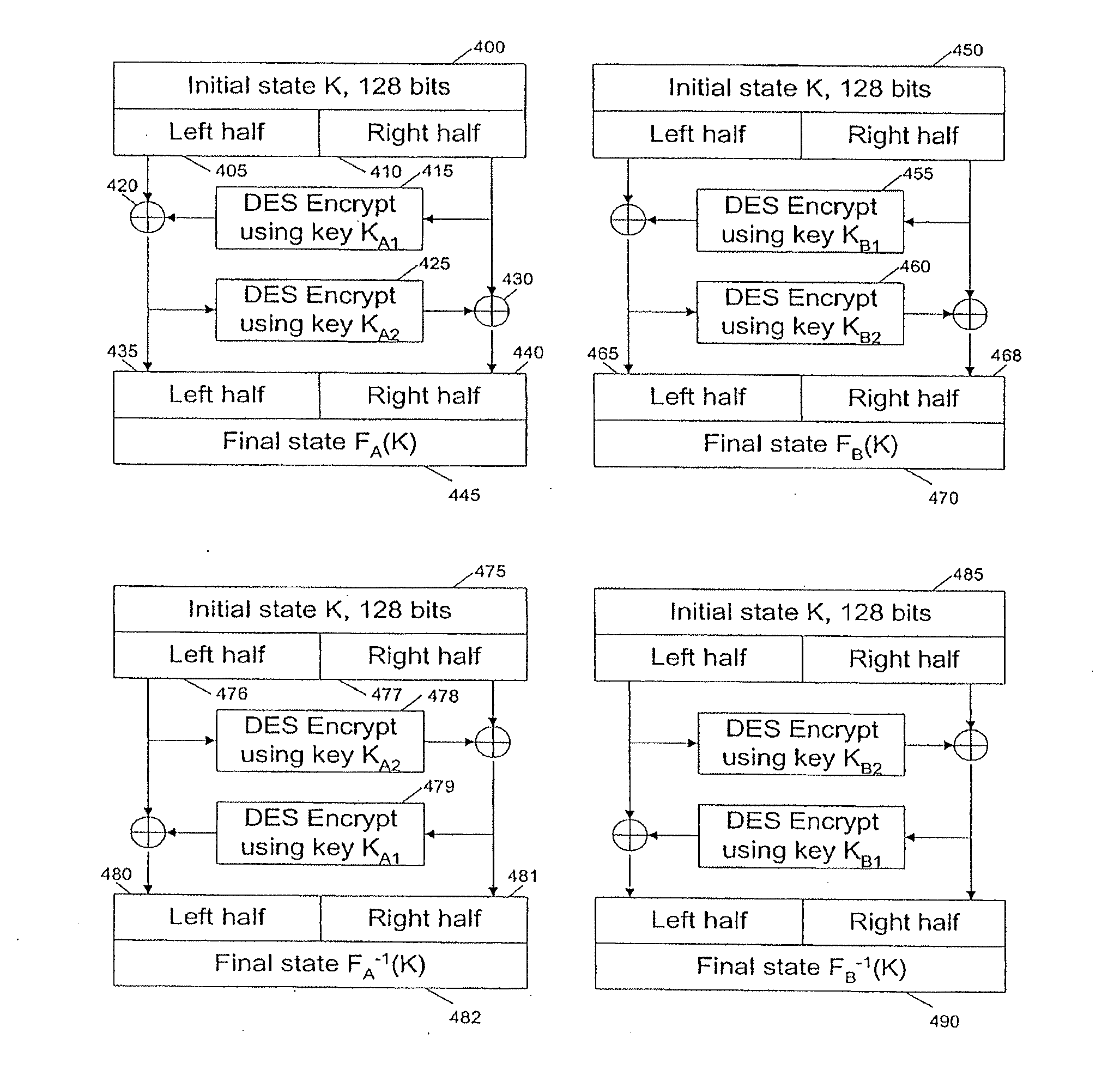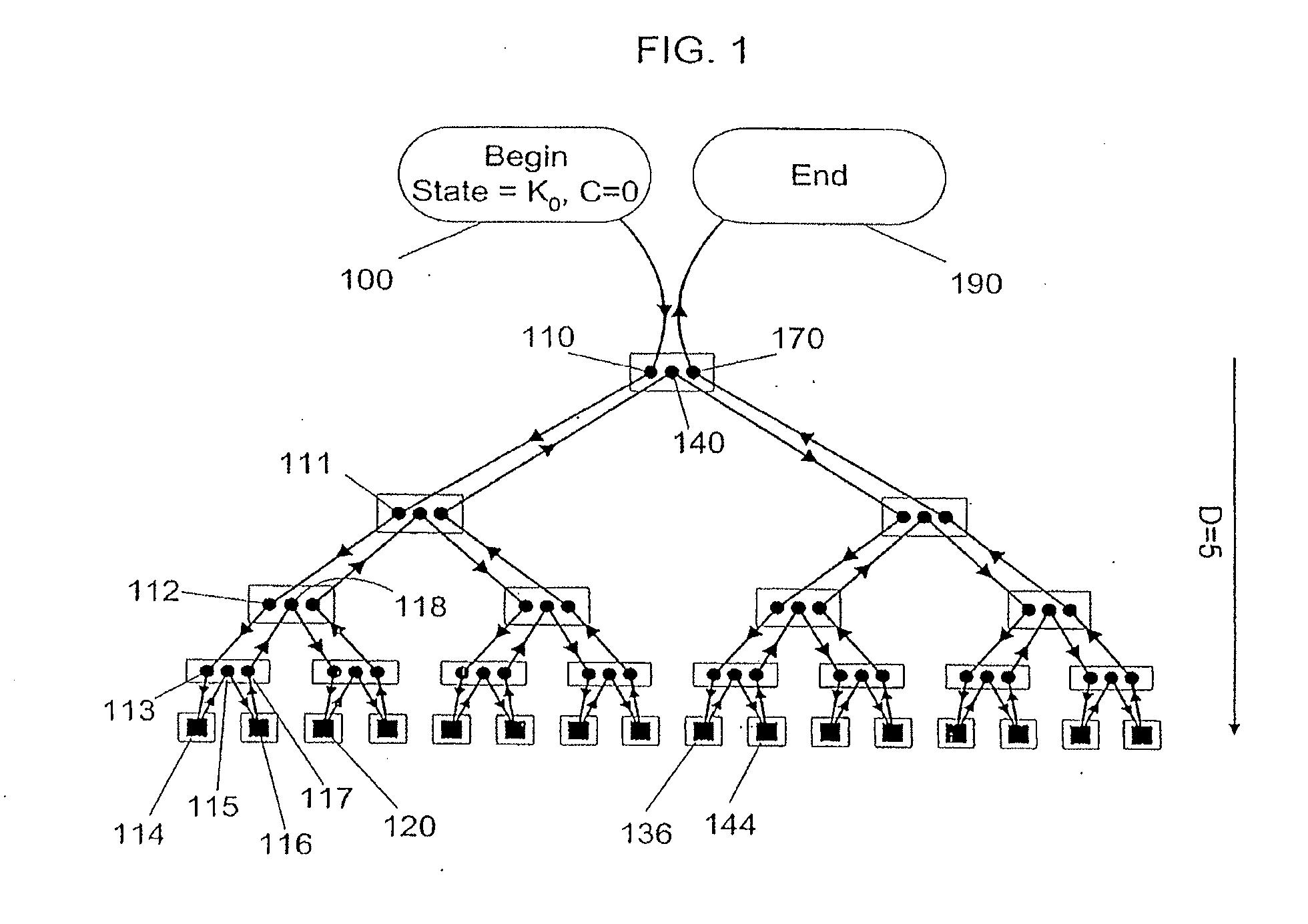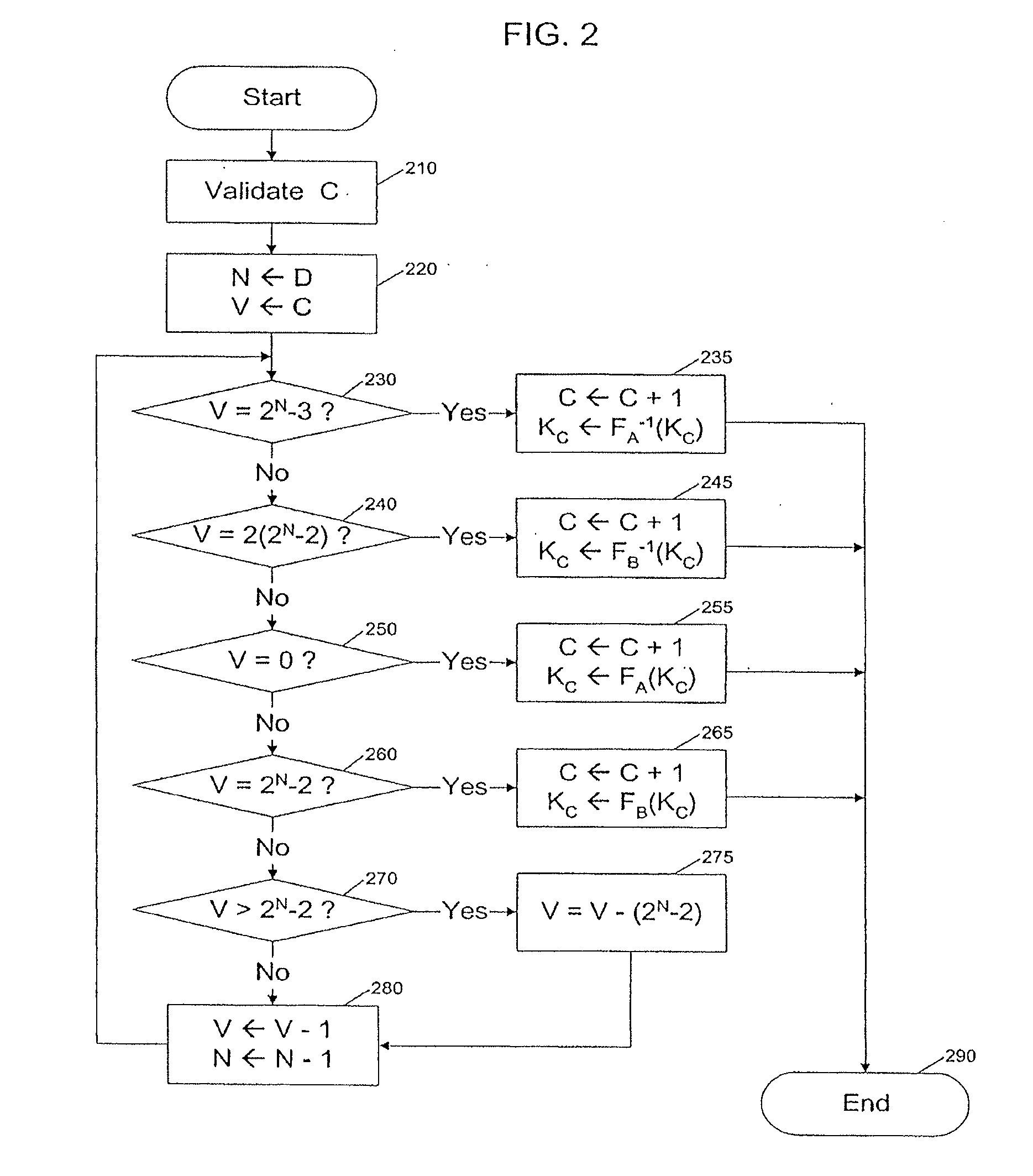Cryptographic token with leak-resistant key derivation
a cryptographic token and key derivation technology, applied in the field of securing payment devices, can solve the problems of information leakage during cryptographic operations that is collected by attackers and is not as usefully describing the updated state, and the information leaked about the input state is not as usefully described, so as to achieve excellent server performance, maintain leak-resistant and/or leak-proof security characteristics, and improve the performance of the corresponding server operation.
- Summary
- Abstract
- Description
- Claims
- Application Information
AI Technical Summary
Benefits of technology
Problems solved by technology
Method used
Image
Examples
Embodiment Construction
[0017]Indexed Key Management
[0018]The techniques disclosed herein can enable parties to perform cryptographic operations with increased security against external monitoring attacks. Although exemplary embodiments are described involving two parties, a “client” and a “server”, the terms “client” and “server” are chosen for convenience and might not necessarily correspond directly to any particular role in a system design. For example, the client could be a smartcard, and the server could be a mainframe computer, or vice versa. Furthermore, although most cryptographic operations involve two parties (e.g., one at the client and one at the server), the techniques can, of course, be applied in environments involving only one party (such as in secure memory or storage systems in which both client and server are under a single party's control or are combined in a single device) or in environments involving more than two parties and / or devices.
[0019]In an exemplary embodiment, the client is...
PUM
 Login to View More
Login to View More Abstract
Description
Claims
Application Information
 Login to View More
Login to View More - R&D
- Intellectual Property
- Life Sciences
- Materials
- Tech Scout
- Unparalleled Data Quality
- Higher Quality Content
- 60% Fewer Hallucinations
Browse by: Latest US Patents, China's latest patents, Technical Efficacy Thesaurus, Application Domain, Technology Topic, Popular Technical Reports.
© 2025 PatSnap. All rights reserved.Legal|Privacy policy|Modern Slavery Act Transparency Statement|Sitemap|About US| Contact US: help@patsnap.com



